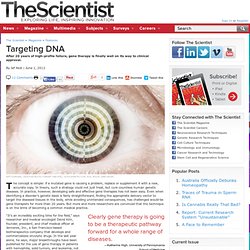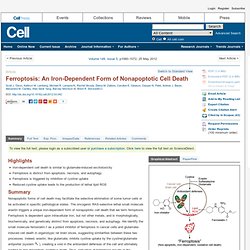

Targeting DNA. The concept is simple: if a mutated gene is causing a problem, replace or supplement it with a new, accurate copy.

In theory, such a strategy could not just treat, but cure countless human genetic diseases. In practice, however, developing safe and effective gene therapies has not been easy. Even when identifying a disorder’s genetic basis is fairly straightforward, finding the appropriate delivery vector to target the diseased tissues in the body, while avoiding unintended consequences, has challenged would-be gene therapists for more than 20 years. But more and more researchers are convinced that the technique is on the brink of becoming a common medical practice.
Clearly gene therapy is going to be a therapeutic pathway forward for a whole range of diseases. Genetically encoded RNA photoswitches as tools for... [FEBS Lett. 2012. Contextualizing context for synthetic biology – identifying causes of failure of synthetic biological systems - Cardinale - 2012 - Biotechnology Journal. Browse Results. Oligonucleotide assembly in yeast to produc... [Methods Mol Biol. 2012. Recent SynBio papers. Ferroptosis: An Iron-Dependent Form of Nonapoptotic Cell Death. To view the full text, please login as a subscribed user or purchase a subscription.

Click here to view the full text on ScienceDirect. Figure 1 Erastin-Induced Death Triggers the Accumulation of Cytosolic ROS, Whose Production Can Be Inhibited by DFO (A) Visualization of HT-1080 cell viability over time ±erastin (Era, 10 μM) and deferoxamine (DFO, 100 μM). (B and C) Cytosolic and lipid ROS production assessed over time (2, 4, and 6 hr) by flow cytometry using H2DCFDA and C11-BODIPY.